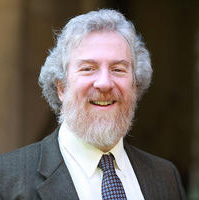Time and Eternity on Shabbat Morning (Part 2)

Here is a parable for worship from the experience of my wife, a management consultant. A professor comes into class at Harvard Business School with a glass bucket, which he places on the desk. He then takes some large rocks from under the desk, places as many of them in the bucket as will fit, and asks the class if the bucket is full. The students (of course) reply that it is. He then takes out some pebbles and pours them into the bucket until it overflows, and, upon being questioned, the students again affirm the bucket is full. A bag of sand is then procured and poured into the bucket, followed by the same question, and finally water—each of these examples drawing some suspicion and hesitancy from the students. The class is then asked the point of this exercise, and a couple of bright ones who have read The One Minute Manager reply that it’s always possible to squeeze a little more into the day, to achieve one more small task. The professor replies, “The only way to get the big rocks in is to put them in first.”
So let us consider once more the length of our services on Shabbat morning, perhaps with a sigh, and recall the challenge I posed to my class of rabbinical and cantorial students to construct a Shabbat morning service that might be contained in an hour and a half. It’s important to note that both in Israel and the United States, there are traditional/Orthodox minyanim that meet on Shabbat morning and “do” the complete traditional liturgy and Torah reading. They might begin at 7:00 a.m. in Jerusalem, and will be on the way home at 8:40 a.m. after kiddush. The speed, of course will be high, with little singing and less commentary or explanation, but this leaves the entire day of Shabbat to be spent with family and friends.
Our congregations are choosing a couple of rocks to put in the bucket that reserve space for us to sing together, to hear words of explanation and commentary, and to daven at a pace that allows a little time for reflection and meaning (kavanah)—especially for a community for whom Hebrew may still be a challenge. So what are the “big rocks” to be included for a Shabbat morning service? My class came up with some different solutions, but there was consensus among the students around the following points:
· Some presence of psalms and preliminary prayers
· Shema’ (3 biblical paragraphs) with (abbreviated) blessings
· ‘Amidahwith kedushah
· Triennial Torah reading
· Some words of teaching (devar Torah)
· mi sheberakhfor healing
· Mourners’ kaddish and Adon Olam
I believe that it is indeed possible to contain a halakhically valid and spiritually meaningful service in this abbreviated time. It might not be the right goal for many congregations, and in some ways, any solution will be far from ideal. But the structures above allow for everyone to fulfill the mitzvot of Shema’ and ‘Amidah, to hear the Torah reading in a way that completes the text on a three-year cycle, and to hear melodies of inspiration and words of teaching.
I would consider the option of placing Musaf after kiddush (as practiced at a number of very traditional minyanim and some of our Ramah camps), and possibly some serious study before the service starts. I am also mindful of the teaching of Rabbi Yossi (JT Berakhot ch. 2) that “one should add something new to prayer each day (mechadeish davar)” and look to include a poem or prayer of recent composition and with inspiring melody at every service.
There are certainly many challenges in prayer, and I am heartened by a reflection from my colleague Rabbi Marcia Prager, who responded to my essay last week, “Better two hours that feel like one hour than one hour that feels like two.” Time in prayer, in quest of the Divine, is not measured by the instruments of the laboratory, and ultimately is not allocated by the approaches of time management experts. This quest is where time meets eternity in our hearts and souls, and our synagogues and sanctuaries are the designated meeting places. Let us enter in.
As always, I am interested in hearing comments and reflections on these thoughts about prayer and liturgy. You may reach me at sabarth@jtsa.edu.



